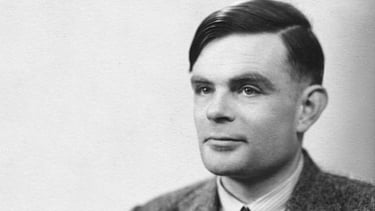Alan Turing: Father of Modern Computer Science
- Jurys Inn
VIVA – Alan Turing, in full, Alan Mathison Turing was an English mathematician, computer scientist, logician, cryptanalyst, philosopher, and theoretical biologist. He is widely considered to be the father of computer science and artificial intelligence (AI). Also, he was one of the most influential British figures of the 20th century.
Turing was highly influential in the development of theoretical computer science, providing a formalization of the concepts of algorithms and computation. Turing attacked the problem by imagining a machine with an infinitely long tape.
The tape is covered with symbols that feed instructions to the machine, telling it how to manipulate other symbols. This universal Turing machine, as it is known, is a mathematical model of the modern computers we all use today.
Well, here are some facts about Alan Turing, the father of modern computer science who was poisoned by Cyanide.
1. Intelligent from an early age
Alam Turing semasa kecil
Turing was born on June 23, 1912, in London, England. After birth, his parents left him and his brother John to foster parents when they returned to India for work. When he was 9 years old, his school principal reported that he was a genius because he was able to solve problems that were very difficult for children of that age.
At 13, he attended Sherborne School in Dorset, where his math teacher also declared him a genius. Despite reportedly paying less attention during humanities and classics lessons, he received high test scores and his records show an appreciation for the theory of relativity.
2. He developed the idea and cracked the code at the university
Alan Turing
- uselessdaily.com
In 1931, Turing studied mathematics at King's College, University of Cambridge, thriving in an intellectual environment and taking up rowing and long-distance running. Amid the rise of Hitler, he also became involved in the peace movement, joining the Antiwar Council.
After graduating in 1934 with a first degree, he was elected a Fellow of King's College at the age of 22 as a result of his dissertation in probability theory.
Turing went on to study for a Ph.D. in mathematics at Princeton, where he also became interested in cryptology. Here he further developed his idea of a 'universal computing machine' that could complete complex calculations using precise programs. This became known as the 'Turing machine'.
3. Turing cracked some codes in Wartime
Mesin Enigma
- National Museum of Science and Technology in Milan
German U-boats have inflicted heavy losses on allied shipping so it is important for the allies to decrypt signals to avoid attacks, launched from the History Hit website, Wednesday, January 4, 2023.
With the help of captured Enigma material and his work developing the 'Banburismus' technique, in 1941 Turing and the Hut 8 team successfully decrypted the German navy's more complex Enigma communication signals, allowing allied convoys to be directed away from German U-boat positions.
This was crucial to the allied victory in the Battle of the Atlantic as it protected merchant convoys essential for food supplies and built military strength, ultimately allowing the Allies to make the D-Day landings in 1944.
Then in July 1942, Turing played a crucial role in developing a complex code-breaking technique, 'Turingery', used against the 'Lorenz' cipher messages generated by Germany's new Geheimschreiber (secret writers).
The ability to read previously encrypted German strategic messages (connecting Hitler and the Army High Command to frontline generals), revealed information that changed the war.
4. The Turing machine effectively pioneered the modern computer
Dasar komputer modern buatan Alan Turing
- Blog HNF
In 1944, Turing knew his concept of a universal computing machine combined with the speed of electronics could provide the principles and means for a single machine capable of performing any programmed task.
The 'Turing machine' later became the basis of the theory of 'computation', formalizing the concept of 'algorithms'. Turing became fascinated by the machine's potential.
5. Died of cyanide poisoning
Alan Turing.
- LADbible
Turing was found dead on June 8, 1954, having passed away the day before from cyanide poisoning at the age of 41. He was found near a half-eaten apple. His mother thought he had accidentally ingested cyanide from his fingers after a chemistry experiment. An inquest ruled her death a suicide although no motive was established.
He was a big fan of Snow White and the Seven Dwarfs. Many still believe that the apple was laced with cyanide and that his suicide method was inspired by the Disney movie.
Since he knew a lot about cryptoanalysis, some theories suggest an assassination by the 'secret service'. Recently, Prof. Jack Copeland (Turing's expert) attributed his death to accidentally inhaling cyanide fumes during an experiment.
At the time of his death, most of Turing's secret wartime achievements remained secret which meant few people knew of his phenomenal impact on the war.




































